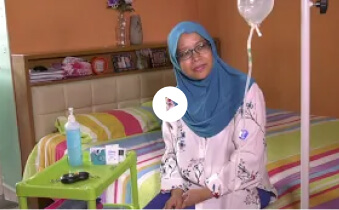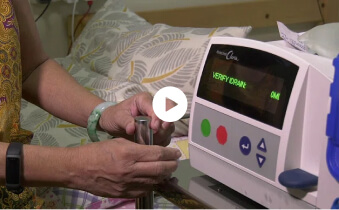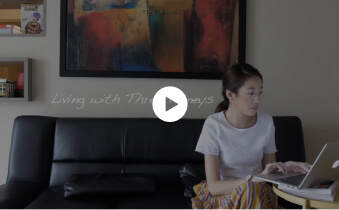Interactive Resources
- Home
- >
- Interactive Resources
- >
- How Treatment Works
Follow us on Facebook
Follow us on Instagram
Follow us on YouTube
Follow us on TikTok
How Treatment Works
When our kidneys are not functioning at their optimal capacity, toxins and excess fluids cannot be removed from the body effectively. Dialysis or transplant is then required. Choosing a treatment option can be stressful. Let the following videos help you understand the available options.
Haemodialysis (HD)
- HD is a treatment performed at a dialysis centre by nurses. It is a way of cleansing the blood of toxins, extra salt and fluids through a dialysis machine, at a dialysis centre.
- It is performed thrice weekly, 4 hours each treatment.
- Before dialysis, newly diagnosed kidney failure patients are required to go through a surgical procedure to connect an artery and vein to create a fistula (vascular access), in order to allow a large flow of blood to carry out HD.
- 2 needles will be inserted into the vascular access*, one to remove the blood and the other to return cleansed blood to the body.
- Blood is then pumped from the body and filtered through the artificial kidney (dialyser), where waste products and excess water are removed.

* Vascular access is surgically created to allow large volume of blood to flow, at high speed, during dialysis.
Peritoneal Dialysis (PD)
- PD is a home-based, self-administered, needleless treatment. PD removes toxins and excess fluids from the body with the help of a dialysate (dialysis solution), through a surgically inserted tube in the abdomen.
- Using the peritoneum membrane in the body, the dialysis solution removes toxins and excess fluids from blood vessels.
- The used dialysis solution will be drained out of the body.
- This daily treatment can be done manually or aided by a machine.
- Doctor may advise to remove or replace the catheter if complications arise or due to wear and tear.
This daily treatment can be done manually (Continuous Ambulatory Peritoneal Dialysis (CAPD)), 4 times a day and each session takes about 30 minutes or aided by a machine (Automated Peritoneal Dialysis (APD)) while the patients is asleep for about 8-10 hours.

Continuous Ambulatory Peritoneal Dialysis (CAPD)

Automated Peritoneal Dialysis (APD)
Kidney Transplant
A kidney transplant is a surgical procedure to treat kidney failure by placing a healthy kidney from a living or deceased donor.
Watch the video to hear what our transplanted patients have to say about the challenges they faced living with kidney failure and how the transplant has improved their life.






